#produced by carlo ponti
Text


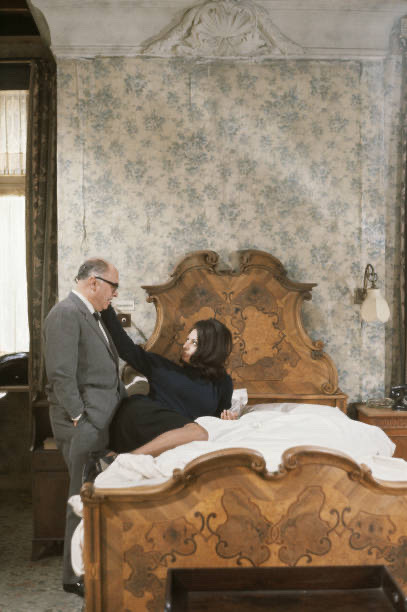
Producer Carlo Ponti (December 11, 1912 – January 10, 2007)
12 notes
·
View notes
Text
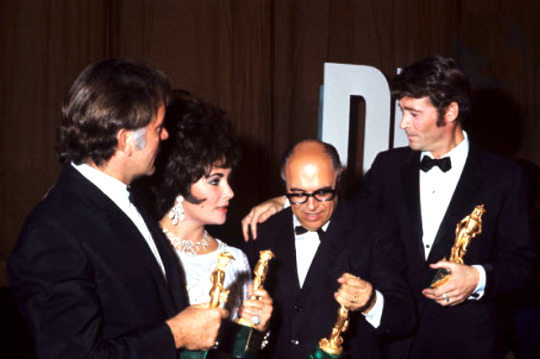
Taormina Films Festival in 1967
Richard Burton, Elizabeth Taylor, Producer Carlo Ponti and Peter O'Toole were awarded with the ‘David’ a golden reproduction of the famous statue made by Donatello on 1 August, 1967 in Taormina, Italy.
David di Donatello Awards
1967
* Best Foreign Actor (Migliore Attore Straniero)
WINNERS
The Taming of the Shrew: Richard Burton
(Tied with Peter O'Toole for The Night of the Generals)
The Night of the Generals: Peter O'Toole
(Tied with Richard Burton for The Taming of the Shrew)
* Best Foreign Actress (Migliore Attrice Straniera)
WINNERS
The Taming of the Shrew: Elizabeth Taylor
(Tied with Julie Christie for Doctor Zhivago)
Doctor Zhivago: Julie Christie
(Tied with Elizabeth Taylor for The Taming of the Shrew)
* Best Foreign Production (Migliore Produzione Straniera)
WINNER
Doctor Zhivago: Carlo Ponti
#peter o'toole#carlo ponti#richard burton#elizabeth taylor#award#david di donatello#the night of the generals#1967#peter o'toole richard burton elizabeth taylor#david di donatello awards#italy#taormina
14 notes
·
View notes
Text
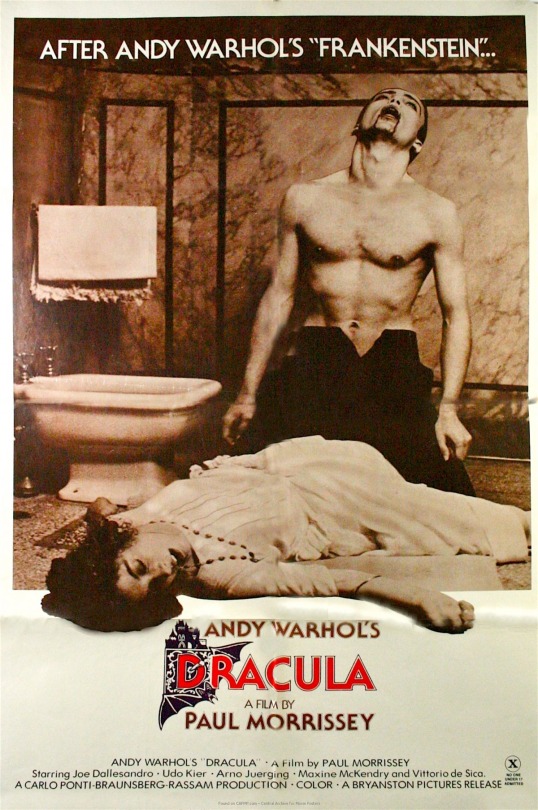
Paul Morrisey «told the New York Times in 1973:
Andy had the idea of making films cheap, throw‐aways, you could say. They’re Andy Warhol films, sui generis. Like there are Italian films, Hollywood films, musicals. They got the underground label because when they began, there was no other place to put them. They don’t fit in at all with Jonas Mekas’ idea of cinema as poetry.
After his near fatal shooting, Warhol no longer wanted to direct. Instead, he wanted to produce like Walt Disney.
Morrissey agreed a deal with producer Carlo Ponti to make two films in Italy. The first was Flesh for Frankenstein shot in 3-D. The second was Blood for Dracula.»





28 notes
·
View notes
Text
Rivisitazioni
Frankenstein, lo ricordo, è il medico, il barone Victor. Eppure appena si sente il nome in questione, la prima immagine che viene in mente è questa:
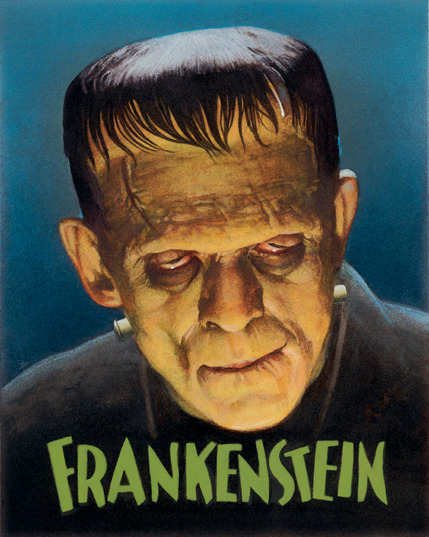
cioè il ruolo della Creatura che Boris Karloff ebbe in una serie di film prodotti dalla Universal con la regia, tra gli altri, di James Whale, negli anni ‘30. Partendo dal capolavoro di Mary Wollstonecraft Godwin Shelley, pubblicato nel 1818 e riedito dalla stessa autrice nel 1831, tantissimi hanno pensato di farne un film, per quella che è, con Dracula e i Vampiri, il soggetto più trasporto della storia del Cinema. Ho ritrovato una lista, da un’idea di Marco Giusti, che raccoglie alcune perle.
La Parodia - Frankenstein Junior, Mel Brooks, 1974
Uno dei massimi film comici di tutti i tempi. Gene Wilder è il nipote del dottore, Peter Boyle nel ruolo della vita dopo Crazy Joe (di Carlo Lizzani, sulla figura del gangster Joe Gallo) è la Creatura, Marty Feldman il più indimenticabile degli Igor, Teri Garr è Inga, Cloris Leachman è Frau Blücher. Una marea di gag, camei leggendari (Gene Hackman nel ruolo dell’eremita), Mel Brooks scopre per caso che lo sceneggiatore dei film di Whale, Gerald Hirschfeld, conservava ancora le scenografie originali, che furono usate nella stessa maniera dei film degli anni ‘30, compreso montaggio e riprese in bianco e nero. Gli Aerosmith riprendono una delle battute di Igor, Walk This Way, per farne un imperituro inno rock. Stracult!
Gli Inglesi - i Frankenstein degli Hammer Studios
La casa di produzione che diffuse i film horror negli anni ‘60 e ‘70. Peter Cushing è nei film di Terence Fischer il barone medico, che in ogni film diventa più cattivo e malefico, e le peripezie della creature fruttarono 7 film tra il 1957 e il 1974. Il più bello è Distruggete Frankenstein del 1969, con annessa scena di stupro, imposta dai produttore per rendere pruriginosa la storia (e del tutto inutile ai fini della sceneggiatura) con il mostro che è Freddy Jones, il padre di Elephant Man di David Lynch (prodotto da Mel Brooks).
Il Blaxploitaion
Nella leggendaria trilogia delle rivisitazioni black dei film, Blackenstein (1973) supera di molto per trash sia Blacula che il leggendario Abby, rivisitazione de L’Esorcista. Il mostro, il cui trucco fu curato da Ken Strickfaden, il truccatore dei Frankestein di Karloff, non fa paura per niente, ha la faccia molle e sembra un Arnold gigante. Il successo nullo della pellicola impedì la trilogia, dato che erano già pronti The Fall Of The House Of House Of Blackenstein e Blackenstein III.
Franco e Ciccio
Immancabile la rivisitazione del duo comico. Regia di Steno, titolo bizzarro, Un Mostro e Mezzo (1965), Ciccio Ingrassia è il dottore, Franco Franchi la cavia. Vuole diventare come Carlo Ponti, il famoso produttore, che è brutto, ma ha come moglie il suo idolo: Sofia Loren. Scena cult: quando dopo la creazione, Franco dice al dottore: Mi viene da ridere, mi ha fatto la faccia da fesso.
Il Trash
Non si sa ancora chi fu il regista di uno dei massimi trash movie di ogni tempo: Terror! Il Castello Delle Donne Maledette (1973). Ai più risulta Robert Oliver, regista americano dei b movie, per altri da Oscar Brazzi, che era sceneggiatore per i Bertolucci e famoso produttore, nonchè fratello del famoso attore italiano Rossano Brazzi. Che si macchia una grande carriera facendo il ruolo del Conte (non barone) Frankenstein, che produce mostri aiutato da una pattuglia di strani tipi, tra cui alcuni dei più grandi protagonisti del cinema di serie B: Gordon Mitchell come Igor, il nano vero Michael Dunn come gobbo Genz, che si mangia i pezzi degli esperimenti del Conte, Luciano Pigozzi (uno che ha recitato in 180 film!), Ciro Papa, qui battezzato Xiro Papas e anche produttore (Papa era di Torre Annunziata) ma soprattutto la creatura, che prende vita dai resti di un uomo di Neanderthal, il mitico Salvatore Baccaro, qui battezzato Boris Lugosi. Che nel film era così:

L’ultragore
Il Mostro È In Tavola... Barone Frankenstein (1973)
Uno dei film in 3D sulle vicende del famoso dottore, prodotto da Warhol, Carlo Ponti, girato da Paul Morrissey e da Antonio Margheriti per le riprese in 3D. Tonino Guerra è accreditato alla sceneggiatura, il film vede Udo Kier folle barone che crea un mostro donna, una giovane Dalila Di Lazzaro. Little Joe Dallessandro è il giovane aiutante, uno stalliere, ed era già passato alla storia per essere citato in Walk On The Wild Side di Lou Reed e, secondo la leggenda, di essere il modello del jeans nella copertina di Sticky Fingers dei Rolling Stones. Penso sia introvabile la versione originale, quelle che si trovano oggi tagliano tutte le scene “macabre” ed erotiche.
Versione Giapponese
Furakenshutain Vs Baragon - Inoshiro Honda, 1965
I giapponesi rubano ai tedeschi durante la guerra un pazzo esperimento per creare un uomo invicibile. Però durante uno studio, la creatura viene bombordata da radiazioni, che lo fanno crescere a dismisura. Sul punto di essere distrutto, un gruppi di archeologi fa rinascere un mostro, Baragon (una specie di Godzilla con il naso a lampadina) e si decide di farsi aiutare dal gigante per sconfiggere il mostro. Grandissimo!
Sono super accette altre segnalazioni!
16 notes
·
View notes
Text

Sophia Loren has a pat on the cheek for her husband, film producer Carlo Ponti, and a smile for her son, Carlo Ponti Jr., as the baby makes his first public appearance in Cantonal Hospital here. The 34-year-old actress gave birth to the child, her first, on Dec. 29th.
(..)
So, in early 1968, when I got pregnant for the third time, I moved to Geneva. I chose a hotel close to the doctor’s office, took to my bed and waited patiently for him to perform a miracle
He concluded that my body wasn’t producing enough oestrogen, which was stopping the egg from attaching to the uterus. This, however, was easily solved with oestrogen injections.
Meanwhile, I had months of forced idleness on the 18th floor of the Hotel Intercontinental.
To distract myself, I spent hours recreating the recipes from my Naples childhood — and years later, published them as a cookbook. Finally the day came when I was due to have a C-section. I hadn’t slept a wink the night before; the truth is that I didn’t want my pregnancy to end.
And I was scared. I didn’t want to share this child that was all mine with anyone else. A few hours later, Carlo Jr. was born — the greatest, sweetest, most indescribable joy I had ever experienced. I was completely overcome by emotion when I held him in my arms.
Afraid that I might wake up from my marvellous dream, I proceeded to shut myself off from the world. It was warm in my hospital room, and I felt safe, me and Carlo Jr, alone together, in a soft cocoon of endless gazes and caresses.
As the days passed, I was afraid to leave my room, worried that my little one might catch a cold. And I simply didn’t feel like going home.
So I grew increasingly rooted to my clean white room, where I was shielded from all danger, and refused to think about tomorrow.
After 50 days, which seemed to go by in a flash, my doctor told me: ‘Sophia, you can’t stay here for ever. Life is waiting for the two of you out there . . .’ I just looked at him, terrified at the thought.
But, finally, after nine months of barely being able to move, and almost two months of cocoon-like existence in my hospital room, I agreed to go forth and face reality.
From 'Yesterday, Today, Tomorrow', Sophia Loren's Memories
38 notes
·
View notes
Text
Blog Post #1
Frederico Fellini was born in 1920 in Rimini, Italy. Frederico spent his entire early life trying to please his parents. From the time he was young, he showed a passion for drawing. He started his career as a cartoonist and portrait painter. He was very talented and had an active imagination. His father was a traveling salesman and wholesale vendor so pleasing his parents became something very important to him. In order to do just that when he became an adult he enrolled in law school at the University of Rome. When he attended that university there were no records of him attending class, therefor this shows he was just attending to please his parents. He never ended up attending or finishing school and did not have a college degree. In 1938, Frederico moved to Rome and started writing articles for a magazine called “Marc’Aurelio”. He also began writing professionally and worked on radio shows. In 1943, he wrote several scripts for the radio show which were called “Chicco and Polina”. He then met the love of his life Giulietta Masina and they got married and had children and spent the rest of their lives together.

In 1950, Fellini’s directed his first film which was called Variety Lights was co-directed with the director, Alberto Lattuada. The film was a perfect opportunity for the start of Fellini’s directing career but after its release, the film had poor reviews and limited distribution which created a disaster for all concerned. The production company went bankrupt, leaving both Fellini and Lattuada with debts to pay for over a decade. Then Fellini went on to direct his first solo film which was The White Sheik in 1952. This film Starred Alberto Sordi. The film is a revised version of a film that was first written by Michelangelo Antonioni in 1949 and based on the “fotoromanzi”, the very popular photographed cartoon strip romance magazines published in Italy at the time. Famous Producer Carlo Ponti gave the commission to Fellini and Tullio Pinelli to develop this film. His original partner decided to turn down the film and Fellini decided to direct the film himself. Fellini was a very versatile person he also wrote scripts for radio shows and movies (The most noted ones were Roberto Rossellini, Pietro Germi, Eduardo De Filippo, and Mario Monicelli) as well as participated in some uncredited gigs for well-known comic actors like Aldo Fabrizi. Fellini also produced drawings in pencil and watercolors this shows how well versatile he is because he can do many other things than just produce films.

Frederico’s top films that he produced were “La Dolce Vita”, “8 ½”, “La Strada”, “Nights of Cabiria” and “I Remember”. He was not only a director and writer but he also appeared as an actor in many films as well. The first oscar Frederico got nominared for was in 1944, he went on to get nominated for many years after that. Federico had won four best foreign language film Oscars in his time as a director, this tied him with his Vittorio De Sica for the most wins by any director. The last oscar Frederico won was In 1993 where he received an Oscar “in recognition of his cinematic accomplishments that have thrilled and entertained audiences worldwide.” That same year he won that oscar, he died of a heart attack in Rome at the age of 73. Frederico was so important because he was one of the best and well know directors, writers and actors in Italy. He was know for having many different talents in the film industry which led him to be so successful. The amount of awards he continuously got nominated for within decades shows how well liked and talented he was a director. Frederico’s films typically would combine memory, fantasy and dreams which interested the public because of the uniqueness that he used in his films.

Works Cited
“Federico Fellini.” IMDb, IMDb.com, https://www.imdb.com/name/nm0000019/awards/?ref_=nm_ql_2.
“Federico Fellini.” Oscars Wiki, https://oscars.fandom.com/wiki/Federico_Fellini.
“Federico Fellini.” Wikipedia, Wikimedia Foundation, 25 Feb. 2023, https://en.wikipedia.org/wiki/Federico_Fellini.
“Log into Facebook.” Facebook, https://www.facebook.com/federicofellini.ds/photos/a.268922689745/10151346387964746/?type=3. Team, Arte Lusso. “Federico Fellini. the Genius of the Italian Cinema.” Arte & Lusso, 22 Jan. 2020, https://arte8lusso.net/culture/federico-fellini/.
3 notes
·
View notes
Photo
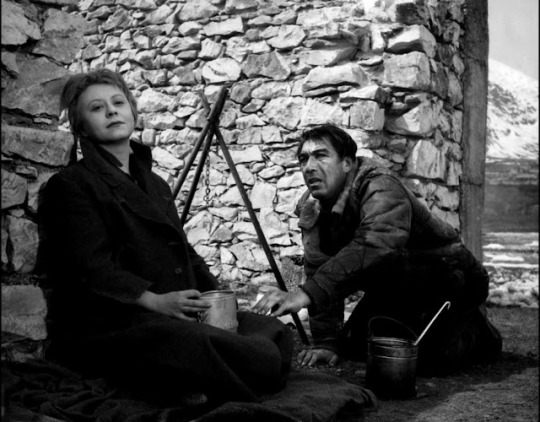
Giulietta Masina and Anthony Quinn in La Strada (Federico Fellini, 1954)
Cast: Anthony Quinn, Giulietta Masina, Richard Basehart, Aldo Silvani, Marcella Rovere, Livia Venturini. Screenplay: Federico Fellini, Tullio Pinelli, Ennio Flaiano. Cinematography: Otello Martelli. Production design: Mario Ravasco. Film editing: Leo Catozzo. Music: Nino Rota.
Sad clowns have gone out of style, so to many of us today Giulietta Masina's Gelsomina seems more than a little cloying. But when La Strada was released, she was hailed as a master of comic pathos, as if she were the unacknowledged daughter of Charles Chaplin and Lillian Gish. Similarly, Federico Fellini's film now feels like an uneasy attempt to blend neorealistic grime and misery with a kind of moral allegory: Zampanó as Body, Gelsomina as Soul, and The Fool as Mind. So when Body kills Mind, Soul pines away, leaving Body in anguish. But La Strada has retained generations of admirers who are willing to overlook the sentimentality and latter-day mythologizing. It remains a tremendously accomplished film, made under some difficulties, including constant battles by Fellini with his formidable producers, Dino De Laurentiis and Carlo Ponti. If it sometimes feels like a throwback to the era of silent movies, it was virtually filmed as one, with its American stars, Anthony Quinn and Richard Basehart, speaking their lines in English and the rest of the cast speaking Italian, and everyone later dubbed in the studio -- which leads to that slightly disembodied quality the dialogue of many early postwar films possesses.
3 notes
·
View notes
Text
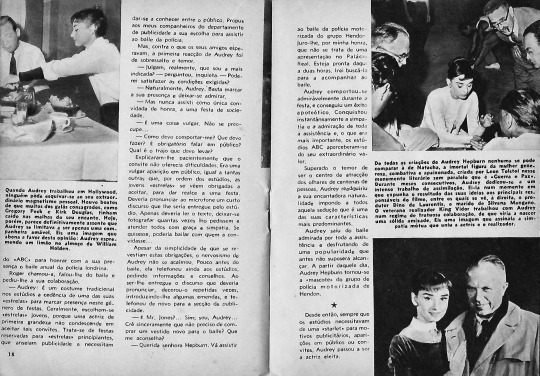
Audrey Hepburn’s life story featured in the Portuguese publication Album dos Artistas issue number 13 of the 2nd Volume, published in 1957.
Part 1 • Part 2 • Part 3 • Part 4 • Part 5 • Part 6 • Part 7 • Part 8 • Part 9 • Part 10
ROUGHLY TRANSLATED STORY
(Originally published in Portuguese)
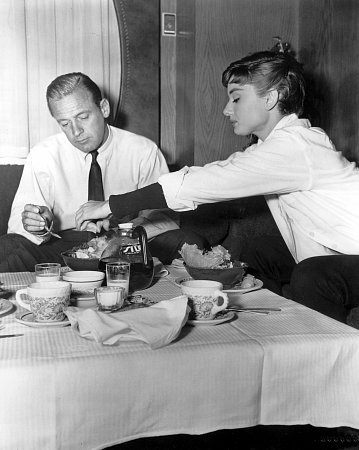
Audrey Hepburn and William Holden taking a break during the production of Sabrina (1954)
When Audrey worked in Hollywood, no one could dodge her extraordinary personal magnetism. There were rumors that many celebrated performers, such as Gregory Peck and Kirk Douglas, had fallen prey to its spell. Today, however, it seems definitively settled that Audrey was limited to just being with one kind mate. Here is an image that supports this opinion: Audrey squeezing a lemon at William Holden's lunch.
Roger called her and told her about ABC's annual London ball and asked her to help.
"It is a traditional custom in the studios to invite one of their stars to be present at this type of party. Young stars are usually chosen because, unlike a first-rate actress, they do not condescend to accept such invitations. These are parties reserved for budding stars who crave publicity and need to make themselves known to the public. I proposed to my colleagues in the publicity department their choice to attend the ball."
But against what her friends had expected, Audrey's first reaction was one of shock and fear.
"Do you really think I'm the best one?" she asked, worried. "Can I satisfy the required conditions?"
"Of course, Audrey. Just make your presence and let yourself be admired."
"But I never attended a society party as the only guest of honor. It's a vulgar thing."
"How should I behave? What should I do? Is public speaking mandatory? What is the attire I should take?"
They patiently explained that the invitation did not pose any difficulties. It was a common public appearance like so many others that, by order of the studios, the young stars are forced to accept to enhance a party.
She was to give a short speech into the microphone that would be delivered to her by the studio. She just had to read the text, let herself be photographed as many times as asked and serve everyone with grace and sympathy. If she wanted, she could dance with whoever invited her.
Despite the simplicity of these obligations, Audrey's nervousness did not calm down. Shortly before the dance, she still called the studios, asking for information and advice.
When she was given the speech she was supposed to give, she memorized it over and over again, introducing some amendments, and called the publicity section again.
"Mr. Jones? Yes, I am, Audrey. Do you honestly believe I don't need to buy a new dress for the ball?"
"Dear Miss Hepburn, go to the ball. I swear, on my honor, this is not a performance at the Royal Palace. Be ready in two hours. I'll go get you to accompany you to the ball."
Audrey behaved admirably during the party, and achieved the highest success. She instantly won the sympathy and admiration of the entire audience and, most importantly, the ABC studios realized her extraordinary value.
Overcoming the fear of being the center of attraction of the eyes of hundreds of people, Audrey regained her charming nature, which is imposing on everyone.
Audrey left the ball admired by all the audience and enjoying a popularity she hadn't achieved before. From that day on, Audrey Hepburn became the ambassador of Hendon's motorized police group.
Since then, whenever the studios needed a starlet for publicity reasons, public appearances, or invitations, Audrey became the actress of choice.
Of all the creations of Audrey Hepburn, none can compare to that of Natasha, the immortal figure of the generous, combative, and passionate female, created by Leo Tolstoy in the unparalleled literary monument that is War and Peace.
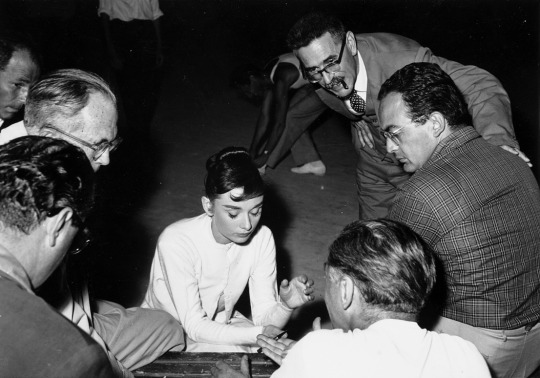
Audrey Hepburn with producers Carlo Ponti and Dino De Laurentiis who secured Audrey Hepburn for the role of Natasha Rostova by shrewdly offering the part of love interest Prince Andrei to her husband Mel Ferrer, with Henry Fonda as the hero Pierre and King Vidor to direct.
1955
During consecutive months, Audrey dedicated herself to an intense work of assimilation. Here she was at a time when she was explaining her own ideas to the main people: filmmakers, including producer Dino de Laurentiis, the husband of Silvana Mangano on the right.
Veteran director King Vidor worked with Audrey in a regime of fruitful collaboration from which a solid friendship was born. Here is an image that highlights the mutual sympathy that united the actress and the director.
Source: NSANTO: Portuguese Magazines
2 notes
·
View notes
Text

Day 60- Film: Europa 51
Release date: September 12th, 1952.
Studio: Lux Film
Genre: Drama, Italian neo-realism
Director: Roberto Rossellini
Producer: Roberto Rossellini, Carlo Ponti, Dino De Laurentiis
Actors: Ingrid Bergman, Alexander Knox
Plot Summary: Affluent Irene lives in Italy with her husband and young son. When her son dies suddenly, and it may have been a suicide, she falls apart. Spending time with her leftwing activist cousin, she starts performing works of charity for the poor, ill, and disadvantaged. This soothes her pain of grief, and the work becomes all-consuming for her. Her family and the authorities, however, come to believe she is mentally ill.
My Rating (out of five stars): ****½
We’ve arrived at our first foreign language film of the project! I added in a couple, but the focus of the project is really Hollywood and mainstream American media. I was excited to see this- Italian neo-realism is one of my favorite film genres. I saw Stromboli in a class years ago, but that is the only Bergman/Rossellini film I’d seen prior to this. Europa 51 is classic neo-realism- gritty and dark, filled with topics Hollywood would never touch, a raw style that gives the genre its name... even the post dubbed sound... I really enjoyed it.
The Good:
Ingrid Bergman. I saw the Italian language version, and she was dubbed by an Italian actress, but even so, you couldn’t take your eyes off of her.
Her husband was played by the doctor in the movie Paula! I knew I had seen him somewhere. He was effective as well, although he was also dubbed by an Italian.
Giulietta Masina! I was thrilled when I saw her name come up in the credits. She’s an actress I absolutely adore- she's so unique and charming. La Strada is always near the top of my favorite films list. She was great in this- very colorful and fun.
The style. As mentioned, it was classic neo-realism, and I loved it.
The topics addressed that would never be in a Hollywood film. Topics like child suicide, prostitutes, a sympathetic guy with communist beliefs, an unwed mother just living her life raising children and enjoying the company of men, religious leaders portrayed in a somewhat negative light... All of these things make the film very modern- way ahead of Hollywood in subject matter.
The way most of the world cannot understand Irene’s total selfless devotion to suffering people. She’s not compelled by either religious or political beliefs... so, by their standards, she must be insane. It’s a very sad indictment of the way those who run society think.
The detailed little snapshots we get of the people Irene is drawn to help- the prostitute with tuberculosis, the unwed mother who takes in orphaned children, the family of a sick little boy, even the family with a criminal for a son.
One of the final shots of the group of people she helped when they came to visit Irene at the hospital. It was very moving.
The digs at the church leaders. The priest who comes to see Irene doesn’t like her full devotion to charity. “We must do good, but carefully as God dictates.” He gave off creepy vibes. Why, as a priest, did it disturb him that she was essentially living like a saint?
The Bad:
Irene could sometimes be drawn as maybe a little too saintly... but then am I just falling a bit into the trap of the society that condemned her?
For such a gritty realistic film with real looking people, the mental hospital she was put in was teeming with very attractive women. It just made me laugh a little.
Sometimes I don’t always love the post recorded and dubbed sound in Italian films of this era, but I’ve also come to appreciate it as a characteristic of neo-realist films.
0 notes
Text
Suso Cecchi d’Amico, the forgotten screenwriter of the Italian cinema
Suso Cecchi d'Amico grew up in a stimulating intellectual environment, far from the fascist indoctrination. She was born of the union of Leonetta Pieraccini, painter, and Emilio Cecchi, man of letters, critic and journalist. Her father introduced her to the cinema: he was the director of the Studios Cines of Rome, where young talents were evolving. In the 1930s, she began to write with him: they translated plays together. These years were also marked by her meeting with the musicologist Fedele d'Amico, her future husband. He came from a line of intellectuals who provided Italy with its musical and theatrical training structures. Suso Cecchi d'Amico was therefore surrounded by illustrious characters at a time when the relationship between cinema and other arts was in full construction.

Her encounters in the theatrical and literary world led her to become a screenwriter. Her first attempt was a failure. She wrote the script for Avatar for the young producer Carlo Ponti. But this adaptation of Theophile Gautier was never shot. She then participated, in 1946, in Mio figlio professore by Renato Castellani, a film made with her father, Aldo Fabrizi, Fulvio Palmieri, Fausto Tozzi and Castellani. She then became involved in a wide variety of projects. Suso collaborated with Luigi Zampa, Vittorio De Sica and Michelangelo Antonioni. Proof of her eclecticism, she participated in 1958 in the writing of the founding film of the Italian comedy, The Pigeon by Mario Monicelli. Among all these encounters, the most decisive is the one with Luchino Visconti for whom she became his main scriptwriter. The new generation of Italian filmmakers also called on her. She also collaborated with Francesco Rosi and with Luigi Comencini.In a few years, Suso Cecchi d'Amico became one of the best and most fashionable screenwriters, the one who is asked to write a good film. She saw her work as that of a craftperson and when asked about a potential transition to directing, she answered s ironically:
« To be a director you have to have a dominant character, to believe firmly in it. Even my friend Monicelli, the most human person I know, even he is not an easy person at all. I would have been very mediocre. »
Overall, Suso Cecchi d'Amico wrote more than a hundred screenplays, spanning more than fifty memorable years of Italian cinema in full renewal. But today her name seems to be forgotten. That’s why this trajectory is very revealing of the central place given to the director but also of how the great names of Italian cinema have ended up erasing her name... when they could never have existed without her.
Juliette Corbel Vivas
0 notes
Text
See the Incredible Interiors of Mid-Century Design Polymath Gio Ponti
See the Incredible Interiors of Mid-Century Design Polymath Gio Ponti
Giovanni Ponti (1891–1979), better known by his nickname Gio, was arguably the most important figure in 20th-century Italian architecture and design. He is best known for his imposing buildings (his Pirelli Tower looms over Milan); his sometimes practical, sometimes impractical furniture (including, in the former category, the lightweight Superleggera chair, produced by Cassina since 1957; […]
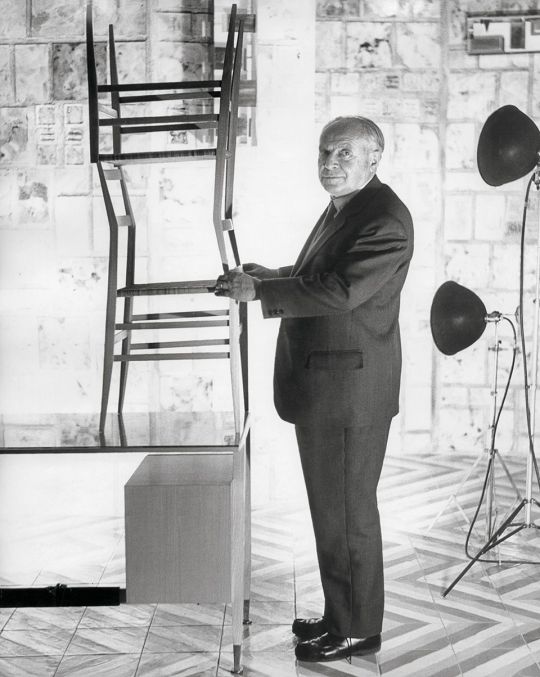
Explore the Genius of Italian Architect Gio Ponti
The pioneer of modern design is the focus of an upcoming retrospective in Paris

At Home With Roberto Baciocchi (Published 2016)

Gio Ponti exhibition
Modernity specialises in the collection and sale of rare and high-grade furniture, ceramics, glass, lighting and jewellery by the most renowned Scandinavian designers of the 20th Century.

Heritage Collection
Molteni&C is re-examining its own history with an eye to the future. The 80!Molteni exhibition, the creation of the company’s historical archive and its
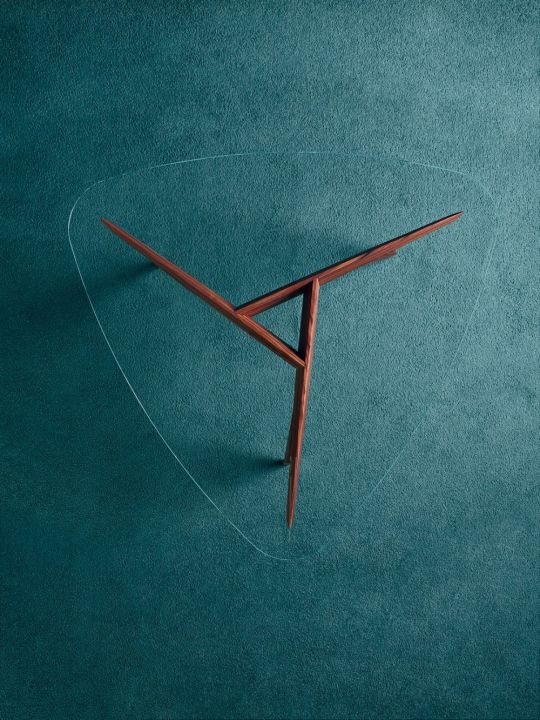
Gio Ponti, Rare "811" Lounge Chair, Fabric, Walnut, Rubber, Cassina, c. 1956
About A rare and iconic lounge chair designed by Gio Ponti. Produced by Cassina, Meda, Italy, c. 1956. This chair is sold with a certificate of authenticity from the Gio Ponti Archives. Other Italian designers of the period include Ico Parisi, Franco Albini, Carlo Mollino, Paolo Buffa, and Osvaldo Borsani.

118: GIO PONTI, Rare and early chair from Conti Contini Bonaccossi, Florence | Wright20.com
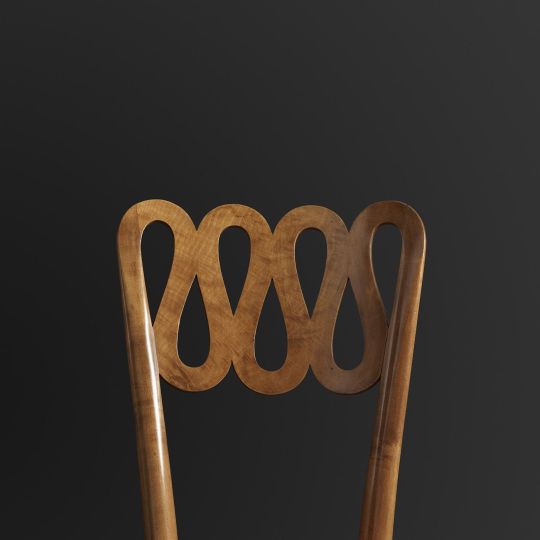
Gio Ponti : les 7 enseignements du génie italien pour faire rayonner votre intérieur - Elle Décoration
Expo jubilatoire de l'automne, la rétrospective consacrée par le musée des Arts Décoratifs* à l'oeuvre immense du génie italien Gio Ponti, promet de faire vibrer Paris. Suivez ses sept enseignements capitaux pour faire rayonner votre home.*Du 19 octobre au 10 février 2019, "Tutto Ponti. Gio Ponti, archi-designer". Plus de renseignements ici.

Giò Ponti en 10 œuvres phare
Retour sur les 10 projets marquants qui ont émaillé sa carrière prolifique
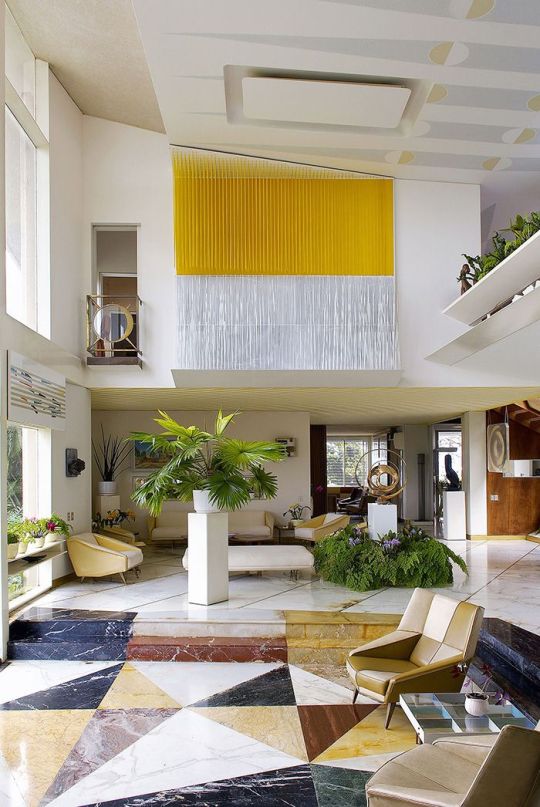
Gio Ponti’s University of Padua Project, in Pictures (Published 2018)

218: GIO PONTI, display cabinet, model 2140 | Wright20.com

First Skyscraper in your country!

Emma Finch on Her Favorite Lamps, Gio Ponti, and the Future of Brilliant British Company Hector Finch
Emma and Hector Finch, owners of the British heritage lighting brand Hector Finch, will be at James showroom in Dallas (March 1 to 3) to “talk all things

Creators A new book brings attention to the Italian master’s talent for creating unforgettable rooms.by Fred A. Bernstein The subject of a comprehensive new book by TASCHEN, design legend Gio Ponti poses here for a 1959 portrait with his Superleggera chairs (photo by Dan Wynn, courtesy of Gio Ponti Archives/Historical Archive of Ponti’s Heirs). Top: At Villa Planchart, built and furnished by Ponti in the 1950s, two antelope heads are mounted in rotating displays that allow them to be hidden from view (photo by Jason Schmidt). May 2, 2021Giovanni Ponti (1891–1979), better known by his nickname Gio, was arguably the most important figure in 20th-century Italian architecture and design. He is best known for his imposing buildings (his Pirelli Tower looms over Milan); his sometimes practical, sometimes impractical furniture (including, in the former category, the lightweight Superleggera chair, produced by Cassina since 1957; and, in the latter, the half-seat-less Gabriela lounge chair of 1971, “for crossing legs comfortably,” Ponti explained); and his achievements as an editor/entrepreneur (he founded Domus in 1928 and ran it until his death with just one break, to launch another publication). He was also a successful product designer, curator, painter, graphic designer, teacher, author and promoter of Italian industry through his collaborations over 60 years with seemingly every important manufacturer, artist and designer in that country. A new book from TASCHEN, more than a decade in the making, lays out his achievements in each of those fields. Gio Ponti presents 136 projects, with text by Stefano Casciani, the Italian writer and designer who conceived the book, as well as Ponti’s late daughter Lisa Licitra Ponti and grandson Salvatore Licitra. Brian Kish, a New York–based architecture and design historian, wrote nearly 1,000 captions for the volume. “Ponti launched Italy into the twentieth century, and this book makes him relevant for the twenty-first,” says Kish, who believes Ponti’s expropriation of historical motifs has a contemporary feel. On 1stDibs, TASCHEN is offering the special Art Edition of Gio Ponti with a reproduction of the designer’s Arlecchino coffee table. Each book in the numbered series of 1,000 comes with a set of four numbered prints of Ponti drawings, as well as the coffee table, reissued in the rarely seen square format first conceived in 1954 for Villa Planchart. The book is full of revelations. But for those who know Ponti for his architecture and his furniture, the real surprise is the ways they came together in rooms that display his seemingly endless supply of creativity. There are many lessons to be drawn from the book, including this one: Ponti was a superb interior designer. Here are just a few of the spaces that prove it. Palazzo del Bo, 1936–41 Left: The central vestibule of the palazzo, which serves as the rectory of the University of Padua, is covered with murals created by Ponti with the help of his daughter Lisa Licitra Ponti and painter Fulvio Pendini. The sculpture, titled Palinuro, is by Arturo Martini. Right: The furnishings in the rector’s office were designed by Ponti and produced by Luigi Scremin. Photos by Giovanna SilvaFrom 1936 to 1941 Ponti redid the interiors of the 15th-century palazzo housing the rectorate of the University of Padua. The main staircase, which he called the Scala del Sapere (stair of knowledge), was fitted with multicolored marble risers, a motif he would repeat in other projects. A pair of Ponti-designed sconces made by Fontana Arte —where as a young man he had been named artistic director — illuminate the frescoed wall wrapping around the stairway. Ponti executed the fresco with the assistance of his daughter Lisa and the painter Fulvio Pendini, treating the wall as a void against which the painted figures seem to float. The rector’s office was outfitted with custom pieces designed by Ponti and made by Luigi Scremin. The bronze door handles are by the sculptor Marcello Mascherini. On the far wall is an enameled painting on copper of one of the university’s founders, rendered by Ponti. Who else could have created a room so serious and so original at the same time? Andrea Doria, 1949–53 This image from a promotional brochure shows the ship’s Zodiac Suite, designed by Ponti with blue-and-white prints by fellow Italian great Piero Fornasetti. Photo courtesy of Paolo Piccione Collection One of Ponti’s most successful collaborations was with the artist Piero Fornasetti, and one of their greatest achievements was the ocean liner Andrea Doria, a symbol of Italy’s postwar renaissance. (Launched in 1953, it was the largest, fastest and supposedly safest of Italy’s new ships.) In an instance of what Kish calls “exuberance tethered to surrealism,” Ponti engulfed the first-class Zodiac suite in Fornasetti’s lithographic transfer prints in such profusion that they create a deliberate disorientation. The white-on-blue and blue-on-white fabrics are an example of a positive-negative tack that Ponti often took to keep things interesting. He “furnished the walls,” Kish says, with various built-ins, and whenever possible, he hid light sources, allowing Fornasetti’s work to dominate. The Madonna and Child over the bed was most likely hung by the owners of the ship when it was blessed before its maiden voyage. The religious icons didn’t save Andrea Doria. It sank in 1956 after colliding with a Swedish ship off the coast of Nantucket. Conte Grande, 1949–53 The first-class reading room of the Conte Grande included Ponti furniture produced by Cassina. Strips of anodized aluminum embellished the ceiling. Photo courtesy of Gio Ponti Archives/Historical Archive of Ponti’s Heirs In the late 1940s, Ponti refurbished several ocean liners that had been used, and badly damaged, in the war. He covered the walls of the Conte Grande’s first-class reading room, a library-like space, in mottled parchment that evokes burled wood. The ceiling is plaster, but with inset strips of anodized aluminum, which Ponti used throughout the ship, elevating an industrial material to a thing of beauty. Concealed lights turn the low ceiling into an overhead display. Intarsia (wood mosaic) panels depict stylized buildings. Flowers and butterflies adorn an enamel-on-glass panel by Nino Zoncada. With rooms like this, Ponti proved that there was no technique and no material he couldn’t find a place for in interior design. Ceccato Apartment, 1950 Ponti selected burled walnut for both the desk and the walls of the main reception room of the Ceccato home in Milan. The recessed shelves hold ceramics by Fausto Melotti. Photo courtesy of Gio Ponti Archives/Historical Archive of Ponti’s Heirs The sheets of Ferrara root wood (known to Americans as burled walnut) that Ponti chose for the reception area of this 1950 Milan apartment have such extravagant, Rorschach-test–like veining as to be almost surreal. But using the same wood on horizontal and vertical surfaces is even more disorienting. It doesn’t help that the curved living room is on a raised platform, or that the marble floor is set on the diagonal. (Diagonally patterned floors, meant to make rooms more dynamic, were a Ponti signature.) Two recessed shelves, illuminated from behind, display ceramics by Fausto Melotti. The Ceccatos were chocolatiers whose Milan retail store was also designed by Ponti, in the same year, 1950. Vembi-Burroughs Offices, 1950 The offices of adding-machine manufacturer Vembi-Burroughs, featured on the cover of a 1952 issue of Domus, had rubber flooring developed by Ponti in conjunction with Pirelli. The large Ponti-designed display table was also used for training staff on the machines. Photoy by Ancillotti, courtesy of Editoriale Domus S.p.A In May 1952, Domus featured on its cover the reception area of the Vembi-Burroughs company, a Genoa-based maker of calculators and adding machines. In redoing the company’s offices, Ponti used his own rubber flooring, called Fantastico P, which he developed with the tire company Pirelli. The system he invented allowed colors to be spread over large expanses without repeating patterns, perhaps emulating the striations of marble. (Fittingly, he later used the material in his Pirelli Tower.) Ponti also designed elegant but functional office furniture and enlisted his frequent collaborator Piero Fornasetti to produce upholstery fabrics that depicted the company’s products. Even serious workspaces can be joyful, or, as Ponti himself put it, “a degree of amusement shouldn’t be excluded.” Villa Planchart, 1953–57 In the reception area of Villa Planchart, in Caracas, Ponti’s Mariposa chairs flank a square version of his Arlecchino coffee table. The master bedroom, on the second floor, includes a small balcony overlooking the space. A site-specific installation by Jesús Rafael Soto, added after Ponti finished his work on the house, occupies the wall next to the balcony. Photo by Antoine Baralhe One of Ponti’s most successful projects outside Italy is the Villa Planchart, in Caracas, Venezuela, completed in 1957. (Kish notes that Ponti ultimately built in more countries than the seminal modernist Le Corbusier.) He designed the villa for Anala and Armando Planchart, art collectors who had made a fortune representing General Motors in South America and who chose him because, Anala wrote, ”we liked everything that appeared in Domus.” Its rooms were to be filled with tropical plants and other exotica, including Ponti’s own furniture. His leather-upholstered Mariposa armchairs, from Cassina, made one of their first appearances in the front of the main reception area. In the back of that room, geometric sofas and chairs from Ponti’s Diamond line are harlequined in yellow and white. The color-block ceiling is a subtle echo of the marble floor. Upstairs bedrooms have tiny balconies overlooking the reception hall; the railing around one depicts a sliver of a moon, in bronze. Ponti would have thought through the view from that balcony. Says Kish, “He drew little figures on his plans with dotted lines to show the clients what they were in store for.” The tables in the main dining room, custom designed by Ponti, were made by Giordano Chiesa. Ponti’s tall brass sconces were made by Arredoluce. Photo by Antoine Baralhe Ponti varied ceiling heights to symbolize the relative importance of various rooms. The double-height dining room contains half a dozen tables of various sizes; their painted tops echo the fragmented marble floor slabs and the painted ceiling. Ponti designed nearly everything in the room, including the surreally long brass sconces. “They would have been glowing and sending light up to the ceiling,” Kish says. This drawing shows plans for the bar, which is designed to masquerade as a colorful mural, with panels that conceal two foldout tables and rotating shelves for liquor and glassware. Photo courtesy of Centro Studi e Archivio della Comunicazione, Universitа di Parma, and Sezione Progetto, Fondo Gio Ponti Nothing was left to chance; an ink drawing with colored gouache lays out what looks like a mural of overlapping triangles and trapezoids. In fact, it is Ponti’s rendering of the bar area, where two panels conceal foldout tables and a third a carousel of glass shelves for barware. Ponti disliked the trophies from the African hunting expeditions of his patron Armando Planchart. Asked to display two antelopes’ heads in the study (pictured at top), he mounted them within a wall of walnut cabinetry, on panels that could be turned 180 degrees, hiding them completely. Below the antelopes are cabinets painted in a fragmented diamond pattern. Ponti’s oddly industrial Round chair (model 852), made by Cassina, is used here for the first time in a domestic setting. The accompanying Mariposa armchairs are also from Cassina. Villa Arreaza, 1954–56 Ponti’s blue-and-white color scheme touches every corner of the villa’s reception area. He reupholstered the owners’ existing furniture to match it and added a pair of his Round chairs, seen in the foreground, as well as two tables of his own design. Photo courtesy of Gio Ponti Archives/Historical Archive of Ponti’s HeirsWhile working on the Villa Planchart, Ponti designed a smaller house for the Arreaza family, known as La Diamantina for its predominant motif. The main reception room was a festival of blue and white, from tiled floor to painted ceiling. The drapery fabric is Ponti’s Diamanti for JSA. Doors that open to the dining room are disguised as a diamond-patterned mural (broken up by a dark rectangle). The owners’ older furniture was refreshed with new Ponti-designed upholstery fabrics. Hotel Parco dei Principi, Rome and Sorrento, 1960–64 The lobby of the Hotel Parco dei Principi in Rome is furnished with sofas, chairs and coffee tables produced by Cassina. Ponti collaborated with Emanuele Ponzio on the wall sconces and pendant lights, made by Candle. Photo courtesy of Gio Ponti Archives/Historical Archive of Ponti’s HeirsThe banquet room walls are lined with colored ceramic pebbles from Ceramica Joo. The curtains are from JSA, and the tables and chairs were produced by Cassina. Photo courtesy of Gio Ponti Archives/Historical Archive of Ponti’s Heirs One of Ponti’s favorite shapes was the elongated hexagon, which appears in everything from small tabletop items to the footprint of his Pirelli building. Here, it’s the shape of the windows in the lobby of the 1964 Rome hotel, as well as that of the sconces, designed by Ponti with Emanuele Ponzio. Ponti created the interiors using several trademark techniques, including the patterning of all-white surfaces (see the subtly striped ceiling in the far room). Some walls are covered in grasscloth and some in Venetian stucco; others are studded with ceramic pebbles arranged in patterns derived from antiquity. In another example of his inventive use of materials, baseboards throughout the hotel’s ground floor are brass. The Rome lobby is furnished with Ponti-designed sofas and chairs from Cassina (model 899). The same ceramic pebbles used in Rome dot the walls of the entrance hall at the Hotel Parco dei Principi in Sorrento. The pillar at left, however, is covered with ceramic panels by Fausto Melotti and adorned with a sconce by Arredoluce. The floor tiles are by Ceramica D’Agostino. Photo by Allegra Martin, courtesy of Collezione Fotografia MAXXI ArchitetturaThe blue-and-white ceramic tile work continues into the bar area. But the bar stools are not, in fact, a Ponti design. Though made by Cassina, they were conceived by Gianfranco Frattini. Photo by Allegra Martin, courtesy of Collezione Fotografia MAXXI Architettura In the sister hotel in Sorrento, Ponti used ceramic pebbles to particularly dramatic effect, applying — as he often did — a graphic design approach to interior design. But here the floors are tile, and Ponti used not just his own furniture but pieces by Gianfranco Frattini (the bar stools), Ico & Luisa Parisi and Carlo de Carli, all made by Cassina. Buy This Book Gio Ponti, offered by TASCHEN, is also sold as an Art Edition, accompanied by four numbered Ponti prints, as well as a reissue of the designer’s Arlecchino coffee table, available through 1stDibs and TASCHEN.
0 notes
Text

Producer Carlo Ponti, born on December 11, 1912 #botd
10 notes
·
View notes
Text
[ad_1]
CNN
—
Here’s a take a look at the lifetime of award-winning display legend Sophia Loren.
Birth date: September 20, 1934
Birth place: Rome, Italy (grew up in Pozzuoli, outdoors of Naples)
Birth identify: Sofia Villani Scicolone
Father: Riccardo Scicolone
Mother: Romilda Villani
Marriages: Carlo Ponti (April 9, 1966-January 10, 2007, his loss of life; September 17, 1957-September 3, 1962, annulled)
Children: Edoardo, Carlo Jr.
At six, her chin was lower by shrapnel throughout a bombing in World War II.
Other display names used earlier than changing into Sophia Loren have been Sofia Lazzaro and Sofia Scicolone.
Nominated for 2 Academy Awards and received one. She additionally obtained an honorary award.
Nominated for eight Golden Globes and received 5. She additionally obtained the honorary Cecil B. deMille Award.
Nominated for one Grammy Award and received.
An completed prepare dinner, she has written three cookbooks.
1949 - Enters the Queen of the Sea magnificence contest and is available in second, successful a prepare ticket to Rome, the place she begins modeling and appearing in B-movies.
Early Nineteen Fifties - Is the runner-up in a nightclub magnificence contest for Miss Rome. Movie producer Carlo Ponti is without doubt one of the judges.
1951 - Makes her US movie debut as an uncredited additional, with no traces, within the movie “Quo Vadis?”
Early Nineteen Fifties - Adopts the final identify Loren.
October 23, 1953 - “Aida” opens; it’s her first main main function.
1957 - Loren seems in her first English-speaking main function, “The Pride and the Passion.” She learns her traces by utilizing cue playing cards of English phrases written phonetically.
1962 - Wins the Best Actress Academy Award for “La ciociara (Two Women).”
September 3, 1962 - Her marriage of just about 5 years to Carlo Ponti is annulled. Neither the Vatican nor Italian regulation acknowledges Ponti’s 1957 divorce by proxy from Giuliana Ponti. Loren and Ponti are compelled to annul their marriage after warrants for his or her arrest are issued.
1964 - Stars within the film, “Matrimonio all’italiana (Marriage Italian Style).” Nominated for an Academy Award.
1964-1965 - Moves to France with Carlo Ponti and turns into a French citizen.
1965 - Giuliana Ponti obtains a French divorce acknowledged by Italian regulation.
April 9, 1966 - Loren and Carlo Ponti marry for the second time.
July 24, 1968 - Loren and Ponti cleared of bigamy fees by Rome’s prison court docket.
January 23, 1979 - Loren is tried (in absentia), and acquitted, of complicity with Ponti in earnings tax evasion, misuse of presidency subsidies, and unlawful export of Italian funds and art work. Carlo Ponti is convicted and sentenced to 4 years in jail (two years have been pardoned) and fined 22 billion lire ($24 million). All fees towards him have been cleared in 1987.
1980 - Portrays each herself and her mom within the made-for-TV film “Sophia Loren: Her Own Story,” primarily based on her 1979 autobiography, “Sophia: Living and Loving, Her Own Story,” written with A. E. Hotchner.
May 20, 1982 - Loren begins her 30-day jail time period for tax evasion, for unpaid supplementary taxes for 1963-1964.
June 5, 1982 - Serves 17 days of her 30-day jail time period.
1991 - Receives Honorary Academy Award for Lifetime Achievement.
2003 - Winner, Grammy Award for Best Spoken Word Album for Children (together with Bill Clinton and Mikhail Gorbachev) for studying Prokofiev’s “Peter and The Wolf.”
2009 - Appears within the film “Nine,” her first function in 5 years.
November 2014 - Loren’s memoir, “Yesterday, Today and Tomorrow: My Life,” is printed.
November 13, 2020 - “The Life Ahead” premieres on Netflix. The movie stars Loren and is directed by her son, Edoardo Ponti.
April 2021 - Loren opens Sophia Loren Original Italian Food, a restaurant and pizzeria, in Florence, Italy.
[ad_2]
Source link
0 notes
Text
THE STRANGER AND THE GUNFIGHTER (1974) Comedic martial arts Western hybrid - free to watch online
THE STRANGER AND THE GUNFIGHTER (1974) Comedic martial arts Western hybrid – free to watch online
‘The fastest in the West… the fastest in the East…’
The Stranger and the Gunfighter is a 1974 comedic martial arts Western hybrid film about a Chinese fighter and a gunslinger who join forces. Also known as Blood Money
Directed by Antonio Margheriti [as Anthony M. Dawson] from a screenplay co-written by Barth Jules Sussman and Miguel de Echarri. Produced by
Gustave M. Berne, Carlo Ponti and Run…

View On WordPress
#1974#Antonio Margheriti#Blood Money#Erika Blanc#Femi Benussi#free to watch online#Lee Van Cleef#Lo Lieh#martial arts#Patty Shepard#review reviews#The Stranger and the Gunfighter#western
0 notes
Text
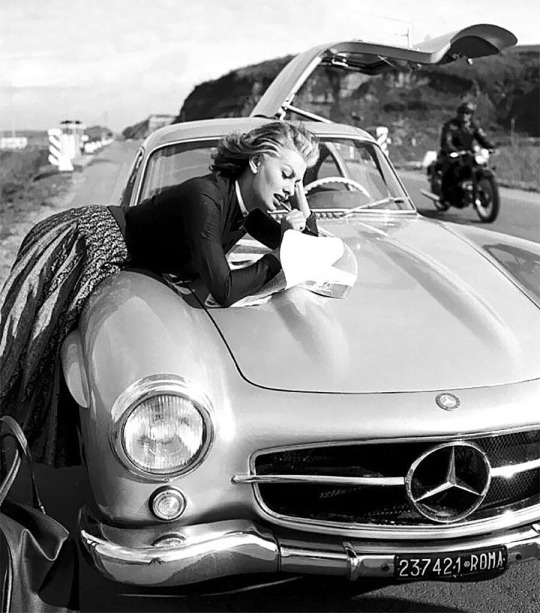
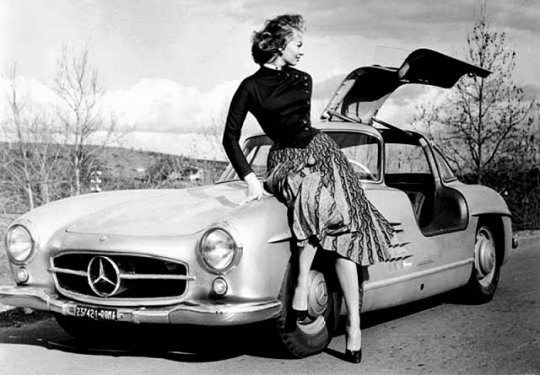

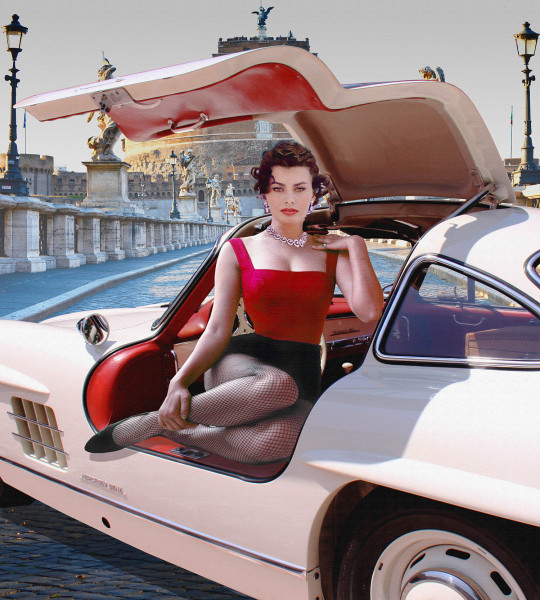


Cars & celebrity: Part 3 Mercedes-Benz 300 SL, 1955. Sophia Loren was associated with number of cars but most notably the gullwing W198 300 SL. The car was a gift from producer Carlo Ponti, who went on to marry her despite a 22-year age difference
#Mercedes-Benz#Carlo Ponti#Mercedes-Benz 300 SL#Mercedes-Benz 300 SL Gullwing#Mercedes Gullwing#Mercedes W198#1955#Cars & celebrity#gullwing#Sophia Loren
388 notes
·
View notes
Text
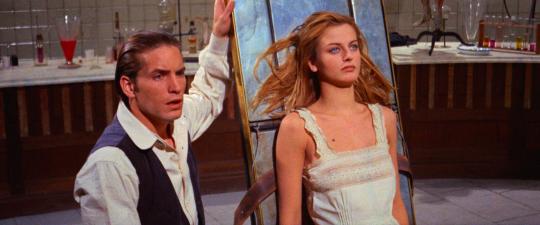
Joe Dallesandro and Dalila Di Lazzaro in Flesh for Frankenstein (Paul Morrissey, 1973)
Cast: Joe Dallesandro, Monique van Vooren, Udo Kier, Arno Jürging, Dalila Di Lazzaro, Srdjan Zelenovic, Nicoletta Elmi, Marco Liofredi, Liù Bosisio. Screenplay: Paul Morrissey. Cinematography: Luigi Kuveiller. Production design: Enrico Job. Film editing: Jed Johnson, Franco Silvi. Music: Claudio Gizzi.
Silly, kinky, campy, bloody, sometimes scary, often very funny, and altogether ridiculous, Flesh for Frankenstein is also known as Andy Warhol's Frankenstein. Warhol's contribution to the film was his name and very little else, except for his association with director Paul Morrissey and star Joe Dallesandro. The idea for the film has been traced back to Roman Polanski, who suggested to Morrissey that he make a Frankenstein movie in 3-D. The backing for the proposal came from producer Carlo Ponti, with the result that the facilities at Cinecittà in Rome and Italian film technicians like cinematographer Luigi Kuveiller, production designer Enrico Job, composer Claudio Gizzi, and special effects artist Carlo Rambaldi became available. The result looks better than it has any right to. It features Udo Kier in one of his first journeys over the top, playing the mad scientist baron, who is trying to breed a new master race. He has his female creature (Dalila Di Lazzaro) and the torso of the male in storage as the film begins, and is searching for a Serbian peasant with the right nose, or as he calls it, nasum -- the baron likes to drop in a little Latin to impress his assistant, Otto (Arno Jürging). He finds it on Sacha (Srdjan Zelenovic, an otherwise unknown actor), who has the misfortune to go with his friend Nicholas (Dallesandro) to a brothel. On their way home afterward, they're waylaid by the baron and Otto; Nicholas is knocked out and Sacha is beheaded. Unfortunately, Sacha wants to be a monk, possibly because, as we see, he's more attracted to Nicholas than to the women in the brothel. So despite having his head sewn to the male creature's torso, he's a failure when the baron tries to breed him with the female. Meanwhile, Nicholas has been hired as a servant by the baroness (Monique van Vooren), who wants him to serve at table but mostly to have sex with her. The baron, who is also her brother, has lost interest in sex some time after the birth of their two children. Nicholas recognizes Sacha when the baron presents his creatures at dinner, so with the help of the children, who have been spying on everything in the castle, he finds his way to the laboratory where everybody in the household eventually winds up in a scene that has more corpses than the last act of Hamlet. Let it be said about Flesh for Frankenstein that it's almost never boring.
1 note
·
View note